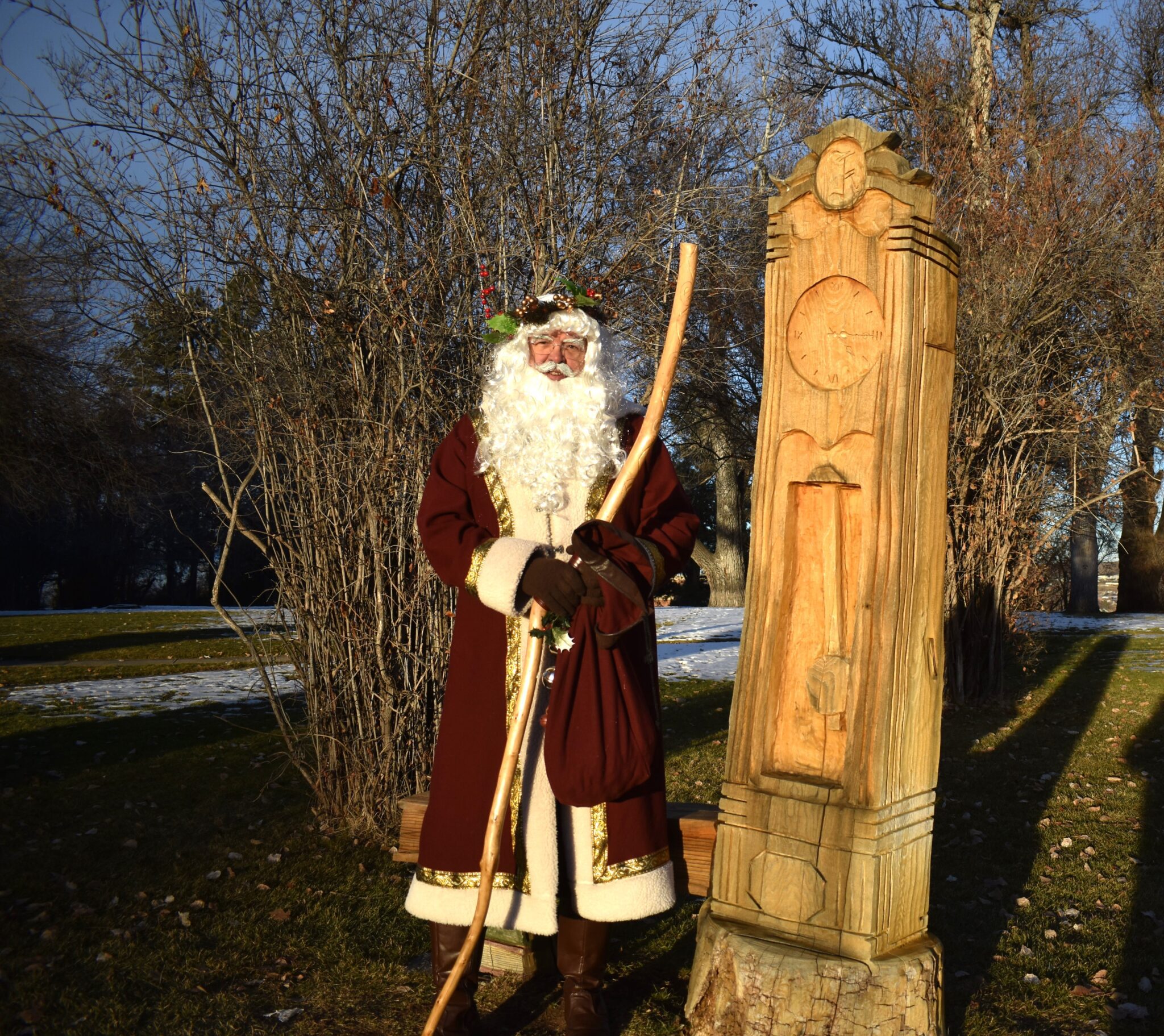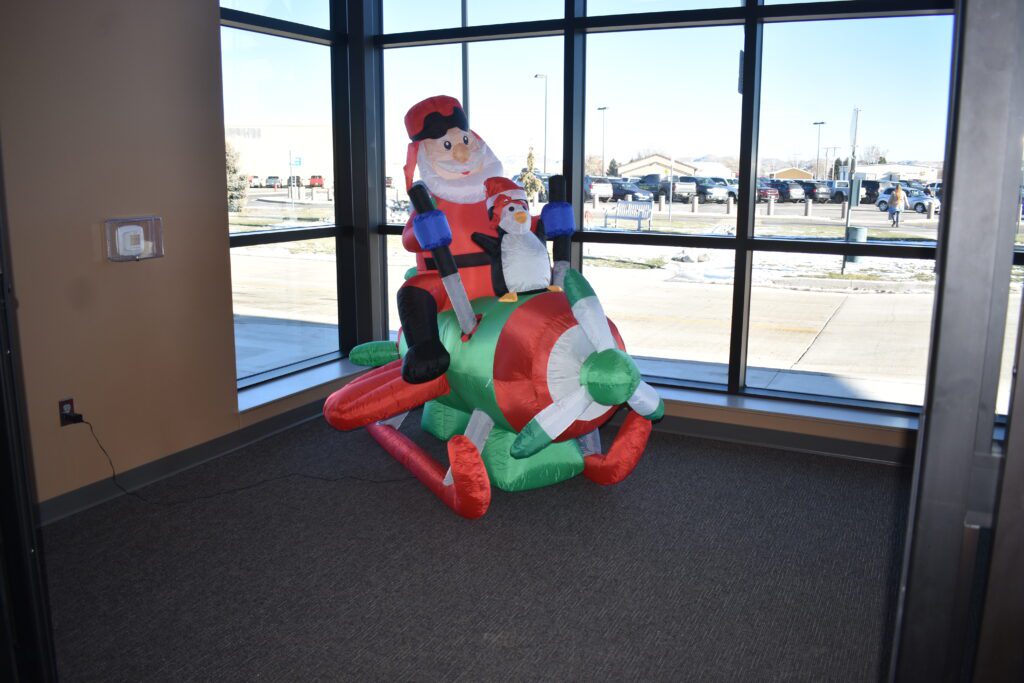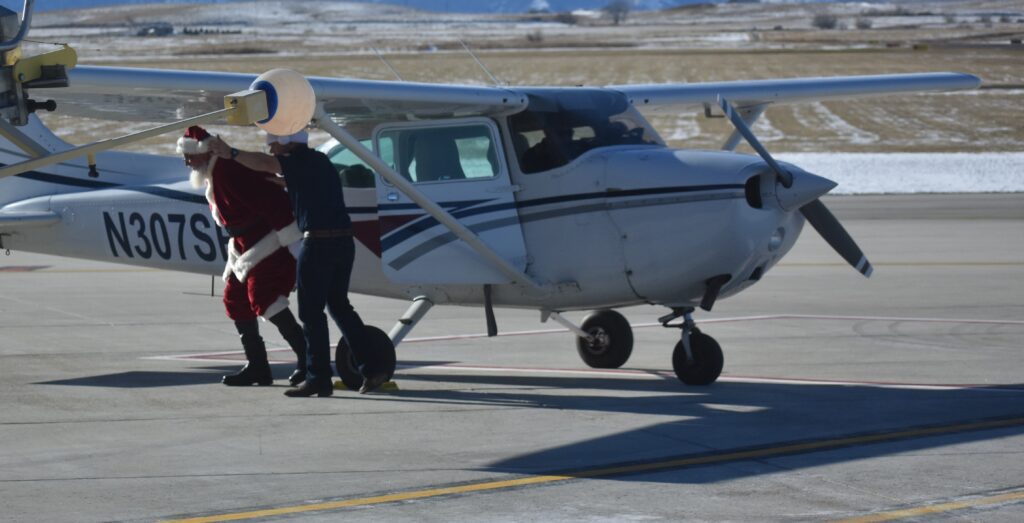News
The Many Faces of Santa Claus

Santa Claus, in his white beard, his red suit, and his jolly ‘ho,ho,ho” has been a part of Christmas for many, many years. He can be seen at Christmas events, at school Christmas programs, and in many malls and stores, so children can tell him their Christmas wishes.
But where did the legend start?
Santa Claus is known as Father Christmas, Saint Nicholas, and Kris Kringle. It is said that he flies through the air in a sleigh pulled by flying reindeer, and brings gifts to boys and girls in the hours between Christmas eve and Christmas morning. He lives at the North Pole and has a bevy of elves to make the gifts that he brings.
The typical Santa that is popular today comes from the poem, ‘A Visit from St. Nicholas,’ which describes Santa as “dressed all in fur” and a ‘beard as white as the snow.” In this poem we also hear the names of the eight reindeer, Dasher, Dancer, Prancer, Vixen, Comet, Cupid, Dunder and Blitxem.
This article in the Rock Springs Rocket, December 24, 1920, talks about the poem and the man who wrote it.
The father of Clement Clarke Moore was once the bishop of New York. “The Night Before Christmas” was published originally without the author’s knowledge in the Troy Sentinel two days before Christmas, 1828. Moore had written It the preceding Christmas just for the delight of his own children, but its circulation slipped beyond the family circle, and an unknown friend sent it for publication. The Sentinel readers paid no attention to it, and it passed without comment until seven years later, when the same paper reprinted It. The second reception was very different from the first. “A Visit from St. Nicholas,” as it was then entitled, was copied broadcast and its author awoke to find his work, if not himself, famous.
Kris Kringle is the German name for Santa. This from the Weston County Gazette, December 8, 1922

The Feature Of Christmas – Spirit of Generosity and Happiness and Arrival of Old Kris Kringle Completes Program. The happiest feature of Christmas Tlde is the spirit of generosity it engenders. The embodiment of this spirit is a Father Christmas, Knight Rupert, or some other mysterious personage, who ubiquitously glides from house to house showering down his gifts for the “weans, and leaving behind him everywhere, an atmosphere of cheerfulness and, genial happiness,
The beneficent belief in this Old World spirit has, happily, spread to almost every corner of the civilized world. In America the German Christ Kindlen or Infant Christ, becomes Kris Kringle, who like Santa Claus in England, pursues his unimpeded way through keyholes and down sooty chimneys to bestow his gifts upon children that ore “good,” while Pelsnichol or “Nicholas With the Fur” follows closely upon his heels with a birchen rod for the “naughty.”
Long may this belief In Kris Kringle maintain Its virile existence and may the “weans” see little of that chastening rod of Pelsnichol.

And this from The Enterprise, December 14, 1906 – Judging from the activity of the church circles the little folks are going to be well remembered at Xmas time. The many churches are preparing for good old Kris Kringle’s visit and as his merry jingling bells ring out the Xmas trees will be waiting for all the good things old Santa carries in his sack. In our happiness don’t let us forget the poor within our midst and remember that it is not the amount we give but the spirit with which it is given.
In The Sheridan Enterprise, December 22, 1922, it tells of modern-day Santa’s who deliver gifts via a sleigh pulled by reindeer. – Up in Alaska’s Snows Reindeers Pull Old Santa’s Sleigh Washington. Dec. 21.— 01d Saint Nick, with his packed sled and harnessed reindeer, prancing over the country with tingling bells, and digging his way through piled snow drifts, is not so mythical after all — for he really does appear to many people just that way. It is in Alaska, where Uncle Sam’s mails are delivered in winter by first class carriers riding in reindeer drawn sleds to the tune of merry chimes. Far away places in Alaska get few deliveries of mail, but the schedule is nearly always arranged so that each pioneer camp in out-of-the way places where the deep snow prevents much intercourse with the outer world gets its Christmas mail near the holidays.

Park County Enterprise, January 16, 1918

Many towns, such as Sheridan during the Christmas stroll, have Santa set up to hear the Christmas wish lists of the youngsters.
This in the Wyoming Stockgrower And Farmer December 30, 1902 – The Christmas Tree. The management of the M.K. Christmas tree and entertainment have just cause to feel proud of the success of their effort to give the little ones of Cody a memorial Christmas. Every child in the town was remembered in a most substantial manner. The Christmas songs and recitations were excellent, and the exercise by a dozen girls in white was very pretty and reflected great credit on Mrs. F.H. Welch, who trained them.
At the close of the interesting program, the sound of Old Santa’s sleigh bells were heard out in the snow, and presently his beaming face peered in the window and wished everybody a merry Christmas. The hearty, jolly voice and spontaneous jokes were greatly enjoyed by the expectant children, many of whom thought they sounded very much like that of popular Len L. Newton.
Then the presents were taken from the heavily loaded tree amid suppressed excitement among the little folks, and a happier lot could not be found in all Santa Claus’ great domain. The decorations in the church were very appropriate and complete, and altogether the affair was a grand success
The Legend of St. Nicholas is mentioned in The Wyoming Times, December 19, 1918 – Bestowing Gifts In Secret Practice of Putting Out Shoes and Stocking: Resulted From Plan of St Nicholas. Christmas stockings have come down to us from the good St. Nicholas, who was a saint of the fourth century of the Christian era and was born March 270 A.D., in Lycla, Asia Minor. He was regarded as especially the patron saint of children, young girls and sailors. The Christmas stocking custom arose as follows: It seems that St. Nicholas, who was the archbishop of Myra, lived In the same town with an impoverished nobleman who, because he had no portions to give his daughters and, indeed, no means with which to support them, was about to sell them into a life of sin. St. Nicholas, who was accustomed to dispense his large fortune In gifts of charity, resolved to rescue the young women.
As he approached their house, wondering how he should proceed, the moon shone out and displayed an open window. Instantly St Nicholas threw a purse of gold in at this window which, falling at the feet of the father of the girls, enabled him to portion his oldest daughter. The second time St. Nicholas visited the house he also was able to throw a purse of gold through an open window, thus providing for the portion of the second daughter. On the third visit the father, watching for his benefactor, cast himself at the feet of the saint. and cried: “Oh, St Nicholas, servant of God, why seek to hide thyself?” The saint made the father promise not to reveal his benefactions. From this habit of bestowing gifts In secret and under the cloak of night arose the practice of putting out shoes or stockings for the younger members of the family so that the good saint would be able to fill them without being spied on.
Today, youngsters can track Santa’s progress as he travels around the globe on Christmas Eve. North American Aerospace Defense Command, also known as NORAD, is responsible for protecting the skies over the United States and Canada. They have been tracking Santa every Christmas Eve for the last 68 years. At one time they were broadcast over the radio waves, and children eagerly listened to find out where Santa was. Today, one can get the app, or go to the Santa Tracking Website to see exactly where he is right now.



Margaret Klebba
December 25, 2023 at 9:09 am
Thank you for the interesting article. Saint Nicholas comes to children in Polish churches on the feast of Saint Nicholas on Dec. 6 and brings them basket full of sweet rolls shaped like Santa, the rolls are donated for children by the local bakery. I had a pleasure of witnessing this event in my home village of Istebna this year. I have not participated in this event since 1987 when I left Poland to come to Sheridan. I would love to include a few pics, but am not able to do so, sorry. I should mention, over 200 people out of about 3000 total population from the tree villages of Istebna, Koniakow, and Jaworzynka came to Kleenburn, Monarch, and Acme to homestead land surrounding Sheridan,most ranched or worked in the coal mines forming a Polish community here. Merry Christmas.